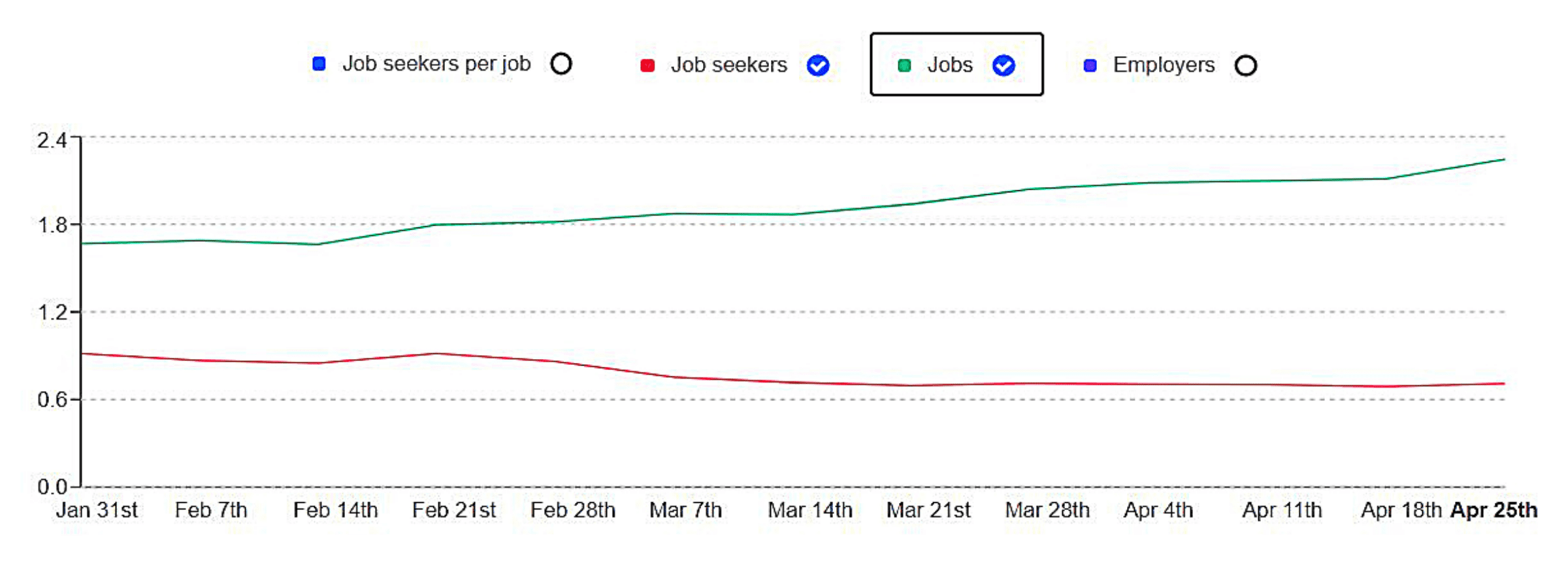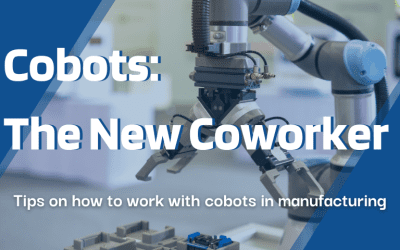Job-hopping is a term generally recognized as spending less than two years in the same position. For temporary or manufacturing workers, the time frame could be less than a year. Over the past few years, job-hopping has continually been on the rise, particularly in the 18-34 age range.
With increased unemployment benefits and many companies shifting to remote work during the pandemic, the proportion of jobs available and job seekers surged in favor of candidates. This blog will break down some of the reasons people job-hop and offer information to help you figure out if it’s right for you.
Main Reasons People Job-hop
Unsurprisingly, the most common reason people job-hop is to earn more money.
However, if employees do not feel valued by their company or experience poor management, they will not hesitate to look for opportunities with a better salary and better perks. Other common reasons for job-hopping include: pursuing a role or industry change, seeking to learn new skills, experiencing changes to family or life factors, and seeking better hours/work-life balance.
Other job-specific reasons outlined by {{cta(‘3ad37504-cee0-4f73-9582-d0e65274d624’)}} include:
- Time-related roles (e.g., campaign, event management, etc.)
- Project-specific roles (e.g., construction)
- Mobile roles (e.g., contract engineers, training consultants, etc.)
All of these reasons are logical and also align with the 18-34 age range. During the younger years, people are growing their families, building their education or skill levels, and figuring out what kind of careers they want to pursue.
But at what point does the harmless hopping turn into a riskier leap?
Downfalls of Job-hopping
If you are truly seeking to build your skills and move your way up the career ladder, at some point you have to put down some roots to grow in your field. With the exception of time or project-related roles, most jobs that ask to see a resume or previous work history will see a pattern of job-hopping as a red flag. Four to six consecutive job-hops could indicate that you are not worth the money and time to train for a position.
If you are chasing a salary, but not necessarily growing your skillset, you run the risk of plateauing. You may end up with a longer resume but no real skillset or list of accomplishments to back it up.
For day laborers who seek temp jobs, you run the risk of being the first to be cut during a company down-size or unprecedented issues, like a global pandemic. To understand what types of job categories exist and what timeline is associated with each, consider this {{cta(‘e7708602-da04-4019-978a-f25386481291’)}} which breaks them down and highlights the benefits of each type.
If you get to a point in your career where the competition is higher, a steady work history, certifications, work-related awards, or letters of recommendation could be what elevates your application to the top.
Today’s Market
The pandemic has certainly affected the job market. Last spring, the economy faced shutdowns across the board and people were hoping to keep their jobs or desperately looking for work. This spring, it is the employers who are facing hesitancy from workers to return to the workplace because of covid-related risks or fighting against unemployment benefits to incentivize people to return to work.
To put it in perspective, I’ll use the example of forklift drivers in the US. According to Indeed, last spring there were roughly 620,000 job seekers and only 13,800 job listings across the country. That’s a 45 job-seeker-to-job ratio, and the average starting pay was $12 – $13 per hour for entry-level positions.
This spring, however, there are roughly 685,000 job seekers and 45,000 job listings. That’s a 16 job-seeker-to-job ratio and the national average starting pay for forklift drivers is now $15 per hour.

The law of supply and demand dictates that the competition for workers is stiff because the demand for forklift drivers is high, but the supply of workers willing to return to work for those taxable rates is lower due to the fact that tax-free unemployment benefits could continue until fall. On top of that, employers are having to compete with other companies to get applicants.
Many companies are offering sign-on bonuses, extra perks, higher wages, etc. to grab people’s attention. While the perks may tempt you to job-hop, ask yourself whether it’s worth it in the long run.
Is it the right move for you?
While the perks may say, “yes”, they are temporary. When the unemployment benefits run out in the fall, the supply of workers will increase, and the demand for workers will decrease. Now is the time to not only stay employed but also ask your employers what career advancement opportunities they can offer.
Starting pay rates may be rising temporarily, but employers are also working hard to retain the workforce they have. Ask your employer if there are openings with better hours, extra training, or opportunities to move into a more desirable role. While it is a candidate’s market, it is also an employee’s market. Now is your chance to step up and potentially get the extra overtime or promotion you are wanting. With fewer workers in the field, it is also the perfect time to prove your value and actively pursue the next rung on that career ladder.
And if a better opportunity comes along, ensure that the perks outweigh the potential downfalls and that the increased pay outlasts the current market.
Interested in improving your skillset? Brush up on soft skills by clicking the image below:
{{cta(‘1d7aca31-6cdc-4d74-8a7c-a73fcaba3c2b’,’justifycenter’)}}




-400x250.png)